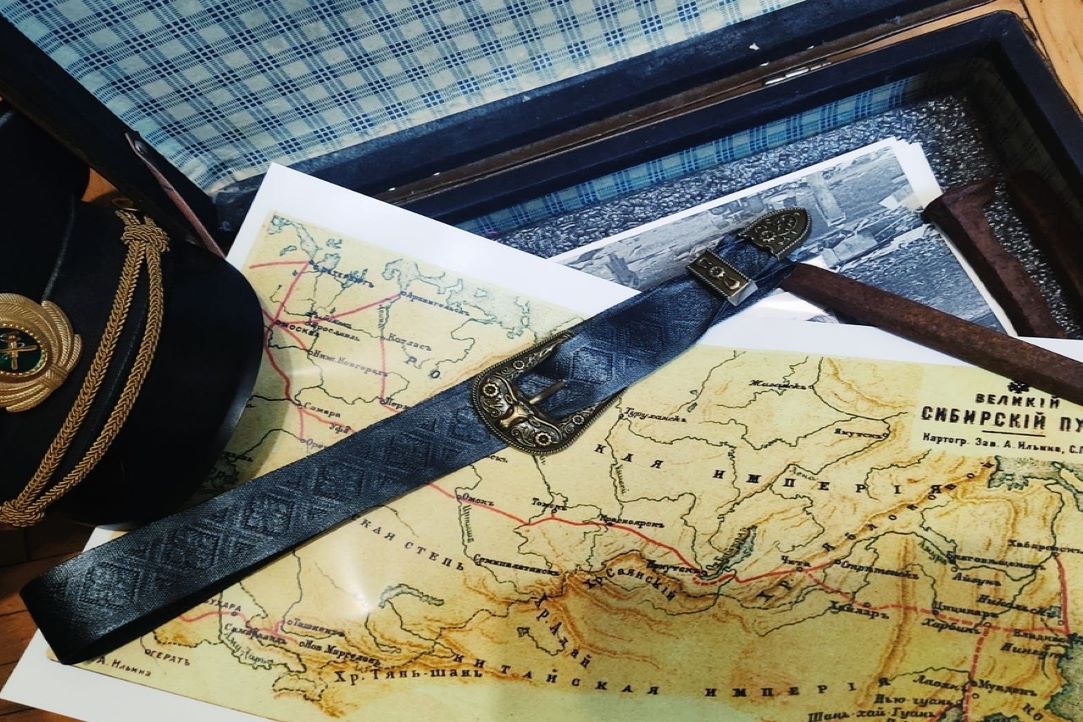Let off Some Steam at the Central Museum of Railway Transport

More than anything, Saint Petersburg is a city of museums. When Peter the Great founded this city, his crown jewel, on the windy banks of the Neva over 300 years ago, he had no way of knowing that its port facilities would be most used not for the great fleets of his new Russian navy, but rather for massive cruise ships carrying thousands upon thousands of tourists.
In the years leading up to the Covid-19 pandemic, Saint Petersburg saw upwards of 5 million foreign tourists land on its shores every year. These visitors came for the architecture, the food, the parks, but most importantly for the museums. If you came to the city from elsewhere, then undoubtedly some of your first stops were to these museums: the State Hermitage, the Russian Museum, Kunstkamera, and so on.
Why, you could visit a different museum in Saint Petersburg and its satellite cities every day for a month and still have some unchecked stops on your list.
Let’s fast-forward a bit. You’ve been in the city now for a few months, perhaps through a change in the seasons, and you feel like you’ve seen pretty much all that there is to see. You’re at that point in the semester where fatigue has set in a bit, and you could really use a nice day out in the city to clear your head. In your mind, you toy with the idea of maybe going and checking out a museum, but your memories of long lines, confusing layouts, and crowded corridors only exacerbate your mental fatigue. If any of this sounds at all familiar to you, don’t lose hope. The city of museums still has something for you.
If you’ve ever walked from the Sennaya Ploschad metro station to the HSE campus on Griboyedova Canal, then you’ve probably passed right by this museum without even knowing it. Across from the Dodo Pizza on Sadovaya Street, next to the Yusupov Gardens is the small, unassuming building of the Central Museum of Railway Transport. In 1896, on the 100th anniversary of the birth of Emperor Nicholas the First, the plan for establishing a railway museum in Saint-Petersburg was first put into action. Originally intended to be housed in a building on Moskovsky Prospect, the first stone for an entirely new building dedicated to the museum was laid in 1901 in its present location on Sadovaya Street. A year and a half later, the museum was officially opened to the public, having been filled with donations from many former railway ministers, and it has since expanded multiple times to reach its present dimensions and collection of more than 60 thousand items and artefacts.
The museum itself is not physically large, and is easy to navigate all the way through in a couple hours without becoming too tired on your feet. However, despite its small size, the interior of the museum never feels cramped or crowded, with high ceilings and spread out exhibits. This layout design, coupled with the museum being relatively unheard-of, means that one can casually wander about it without being bothered by many other museum-goers, something that is highly appreciated in these pandemic times as well as by anyone who has become weary of smothering museum crowds.
The collection is ordered chronologically, from the establishment of railway transport in Russia by Emperor Nicholas the First, to Soviet-era developments in railway technology, and finally to the trains of modern Russia. The collection is as varied as the times from which it came. The first exhibits you see display the origins of railway transport, with maps, charts, diagrams, and other historical artifacts that show the birth and first steps of this industry that was to connect the globe. Further on are small-scale models: some of them show the architectural accomplishments of Russian railways, crossing the widest rivers and valleys and breaking through the tallest mountains; others give us a glimpse of what the first days of rail travel in Russia was like, with miniature train cabins complete with passengers and staff. The next wing of the museum begins with a tribute to the Great Patriotic war, and outlines the role that railway transport played in Soviet perseverance and eventual victory; the next few rooms show how this continent-spanning iron behemoth of a railway system was combined with the technology of the modern world during Soviet times. The final leg of your journey through the history of railway transport in Russia brings you up to speed with its current state: many of these exhibits are interactive, with even a full-scale train compartment available for exploration by those who have not yet had the experience of a Russian sleeper train firsthand. The museum staff are also happy to show you some of the finer details of how railway transport works using electronic models on simulated tracks. The museum’s exhibits are constantly being changed and updated, with the latest exhibition having been unveiled as recently as October 29th of this year. Even if you don’t know the next thing about railway transport, or aren’t so confident in your Russian language skills, you can still enjoy the various models, displays, and diagrams that the museum has to offer, and appreciate how closely the history of this country is reflected in its steel rails.
So the next time you’re looking to clear your head of academic fatigue, consider taking a walk in the Yusupov Gardens, grabbing a slice at Dodo’s, and stopping into the Central Museum of Railway Transport.
Hopefully it’ll help to “get you back on the right track.”
Sources:
Text by

